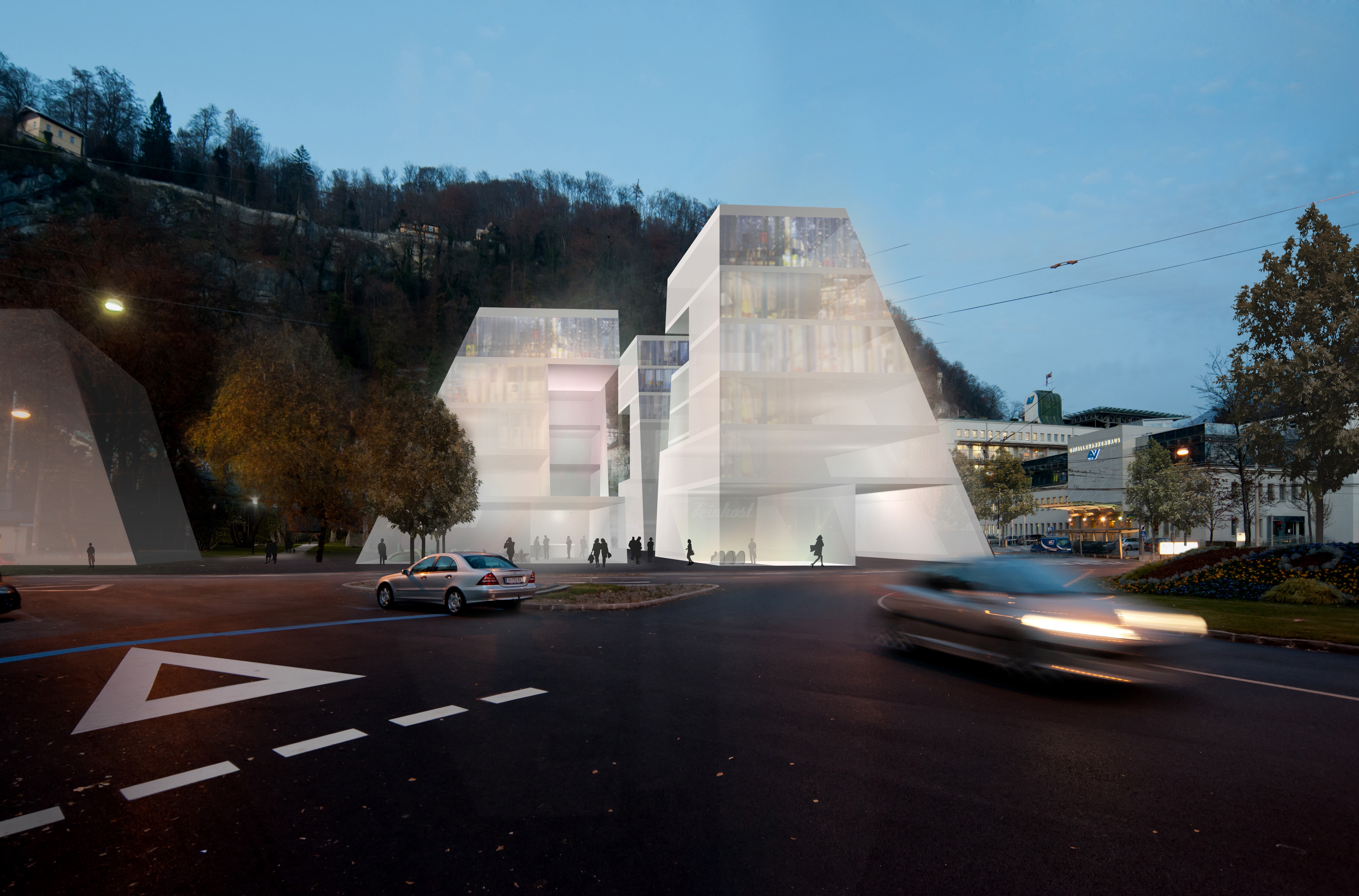Quartz
Six monolith-like structures are grouped around a rectangular square which is a pedestrian zone. The specific position and form of the objects produces a distinctive urban ensemble.
The central idea of the design is the creation of a typological transition from distinctive city mansions to the large dimension of an accident hospital. The principle of free-standing mansions in the surroundings was adopted, however condensed into an urban complex and contrasts with the dimensions of the accident hospital.
The density of the arrangement of the structures decreases from floor to floor due to their tapering forms and is aligned to the largesse of the free-standing mansions. A partially transparent, partially opaque envelope spans the contours of the six objects and emphasizes their silhouettes in various degrees of translucency.
The two closely placed front objects have a bridgehead function vis-à-vis the historic centre. They form a kind of gate to a dense, exciting urban space. The significant arrangement of the six structures with partially open corners lets sunlight penetrate the ground floor areas and deep into the apartments. The apartments are oriented in at least two and often three directions; in addition they have large glass windows with a view of the square, the historic centre close by or of the surrounding nature.
If you are in the vicinity outside the urban complex, the view of the distinctive points in the cityscape remain free due to the upwardly tapering structures with their different heights and outwardly facing slanting facades.

 Index
Index